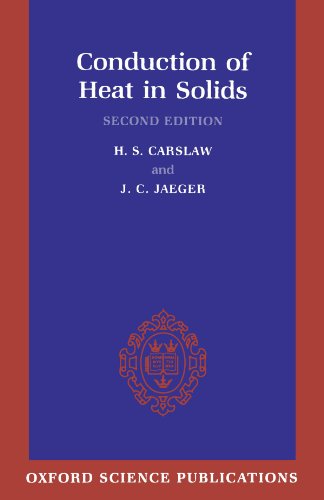Conduction of Heat in Solids book
Par molloy rosie le lundi, septembre 12 2016, 01:25 - Lien permanent
Conduction of Heat in Solids. H. S. Carslaw, J. C. Jaeger

Conduction.of.Heat.in.Solids.pdf
ISBN: 0198533683,9780198533689 | 517 pages | 13 Mb

Conduction of Heat in Solids H. S. Carslaw, J. C. Jaeger
Publisher: Oxford University Press, USA
Conduction can simply be thought of as heat transfer by “touch”, and only can occur in matter (solids, liquids and gases). This is the primary method of heat transfer in solids and it works best of all in metals (because loosely bound electrons play a role). Improving your home's energy efficiency is one of the best investments you can make, paying tax-free dividends immediately in the form of lower heating costs. In this process, heat is transferred from particles to particles of the solid, without the actual movement of the particles. Conductive Heat Transfer Heat-transfer equipment in which heat is transferred by conduction is so constructed that the solids load (burden) is separated from the heating medium by a wall. Conduction is a process of heat transfer in solids. Heat can be transferred by three processes: conduction, convection, and radiation. Heat always flows from an area of high energy to an area of low energy. Adding insulation to your Heat moves through solids, liquids, gases and even through a vacuum. Conduction is the transfer of heat along a solid object; it is this process that makes the handle of a poker hot, even if only the tip is in the fireplace. Heat can flow by conduction, radiation or convection. Like for solids mode of transfer of heat is conduction. Warm materials always transfer their heat to cooler materials. It is also an efficient method of conduction in liquids, but occurs hardly at all in gases.